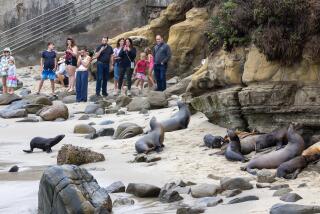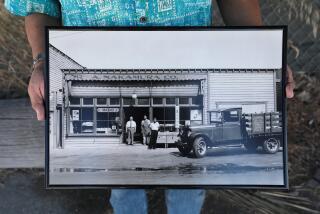It’s No Place Like Home
- Share via
Every now and then, someone asks a real estate agent about renting an apartment in one of the nifty-looking high-rise buildings on those tropical islands in Long Beach Harbor.
But there’s never a vacancy.
That’s because there are no tenants. And no apartments. And no tropics.
Those buildings--and the luxurious profusion of bandstands, waterfalls and palm trees clustered around them--are the stuff that dreams are made of: an elaborate camouflage intended to mask one of Southern California’s most successful oil fields from public view.
They did not come cheap.
It cost $2 million to build each of the islands two decades ago (there are four in the harbor, called White, Chaffee, Freeman and Grissom in honor of astronauts who lost their lives in the U.S. space program) and $1 million apiece to install the camouflage, which includes color electric lighting for night display.
But they are worth every penny, according to the Long Beach Beautiful Committee, which gave the project an award for aesthetic contribution to the community, and the local chapter of the National Society of Professional Engineers, which selected it as the outstanding achievement of 1966.
Unlike the more familiar oil islands that stand on steel legs, each of the 10-acre islands in Long Beach Harbor consists of a rock perimeter, painfully built up from the bottom six fathoms down, surrounding a core of dredged sand, piled 15 feet above mean low tide.
Each island has about 200 wells--the majority slant-drilled to reach producing zones sometimes far removed from the neighborhood of the wellhead--and more than 700 million barrels of crude oil have been produced thus far, with the total expected to reach 1 billion.
Meanwhile, water is injected into the vacated oil reservoirs to increase productivity of the field . . . and to prevent the City of Long Beach from subsiding below sea level.
And the whole operation is soundproofed--which is just as well, according to the work crews who know the islands best. All seem to agree that it’s a pleasant enough place to work.
(But they wouldn’t want to live there.)
More to Read
Sign up for Essential California
The most important California stories and recommendations in your inbox every morning.
You may occasionally receive promotional content from the Los Angeles Times.






